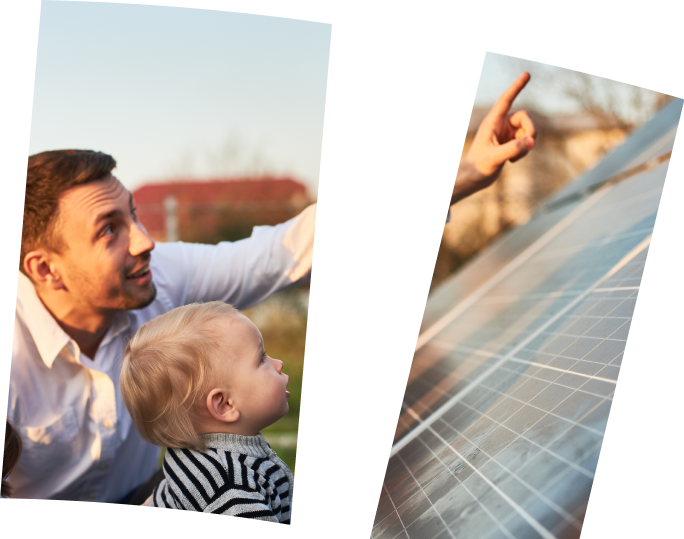ESG - responsible investing.
Invest in the world you want with a socially responsible and ethical portfolio. Use your money to support change while finding new opportunities for growth and diversification.
Get started
ESG - responsible investing.
Invest in the world you want with a socially responsible and ethical portfolio. Use your money to support change while finding new opportunities for growth and diversification.
Get startedInvesting that fits with your worldview.
Our socially responsible portfolios are made up of investments that prioritise environmental, social, and corporate governance factors (ESG). Essentially, we’re talking about investing in companies committed to operating responsibly and sustainably, while seeking to make a positive impact on society and the planet.
By choosing a socially responsible portfolio, you can invest in a way that reflects your values and views, without sacrificing the potential for long-term growth. Join the movement towards a brighter future with a socially responsible portfolio.

Know your impact.
Know your impact.
Moneyfarm’s socially responsible portfolios are designed using funds invested in some of the most forward-thinking and impactful companies in the world – along with many others committed to improving their footprint. MSCI data helps us check ESG funds containing thousands of different assets, so we’re confident that they meet our funds' strict criteria.
Here’s how our mid-range ESG portfolio measures up.
Moneyfarm socially responsible portfolios are designed using funds invested in some of the most forward-thinking and impactful companies in the world – along with many others working hard to improve. MSCI data helps us check ESG funds containing thousands of different assets, so we’re confident in our selection process and you can be too.
Here’s how our mid-range ESG portfolio measures up.
Average carbon emissions
42.3%
Lower*
Relative to revenues and compared to companies in a non-ESG portfolio
United Nations Global Compact
100%
Compliance*
Covers climate, working conditions, diversity, corruption and more
Labour laws
100%
Compliance*
Includes prohibition of child labour, unfair discrimination, forced labour and more
*Certain information ©2021 MSCI ESG Research LLC. Reproduced by permission.
Although Moneyfarm’s information providers, including without limitation, MSCI ESG Research LLC and its affiliates (the “ESG Parties”), obtain information (the “Information”) from sources they consider reliable, none of the ESG Parties warrants or guarantees the originality, accuracy and/or completeness, of any data herein and expressly disclaim all express or implied warranties, including those of merchantability and fitness for a particular purpose.
The Information may only be used for your internal use, may not be reproduced or redisseminated in any form and may not be used as a basis for, or a component of, any financial instruments or products or indices. Further, none of the Information can in and of itself be used to determine which securities to buy or sell or when tobuy or sell them. None of the ESG Parties shall have any liability for any errors or omissions in connection with any data herein, or any liability for any direct, indirect, special, punitive, consequential or any other damages (including lost profits) even if notified of the possibility of such damages.
Additional references
United Nations Global Compact
International Labour Organisation
The Information may only be used for your internal use, may not be reproduced or redisseminated in any form and may not be used as a basis for, or a component of, any financial instruments or products or indices. Further, none of the Information can in and of itself be used to determine which securities to buy or sell or when tobuy or sell them. None of the ESG Parties shall have any liability for any errors or omissions in connection with any data herein, or any liability for any direct, indirect, special, punitive, consequential or any other damages (including lost profits) even if notified of the possibility of such damages.
Additional references
United Nations Global Compact
International Labour Organisation
If you invest £15,000 in a ESG portfolio, you’ll pay:
| Fee | Annual % | Annual £ |
|---|---|---|
| Moneyfarm fee | 0.45% | £67.50 |
| Underlying fund fee | 0.20% | £30.00 |
| Market spread* | up to 0.02% | £3.00 |
| Total | 0.68% | £100.50 |
The example above is based on an investment of £15,000 (learn more about the fees and costs for fixed allocation).
*The market spread effect also impacts your investments. This is a characteristic of trading on the financial markets and represents the difference between bid and ask (buying and selling) prices for an investment at a specific time. This can be 0.10% at Moneyfarm (assuming the average between our Classic and ESG allocations, we sell 40% of the assets in your portfolio and replace them with new assets during the year), but you'll always see the real price you buy and sell assets at.
If you invest £15,000 in a ESG portfolio, you’ll pay:
| Fee | Annual % | Annual £ |
|---|---|---|
| Moneyfarm fee | 0.45% | £67.50 |
| Underlying fund fee | 0.20% | £30.00 |
| Market spread* | up to 0.02% | £3.00 |
| Total | 0.68% | £100.50 |
*The market spread effect also impacts your investments. This is a characteristic of trading on the financial markets and represents the difference between bid and ask (buying and selling) prices for an investment at a specific time. This can be 0.02% at Moneyfarm (assuming the average between our Classic and ESG fixed allocation portfolios, we sell 10% of the assets in your portfolio and replace them with new assets during the year), but you'll always see the real price you buy and sell assets at.
Getting started is easy.
Answer a few simple questions.
Discover your perfect portfolio.
Invest according to your goals.
Answer a few simple questions.
Discover your perfect portfolio.
Invest according to your goals.